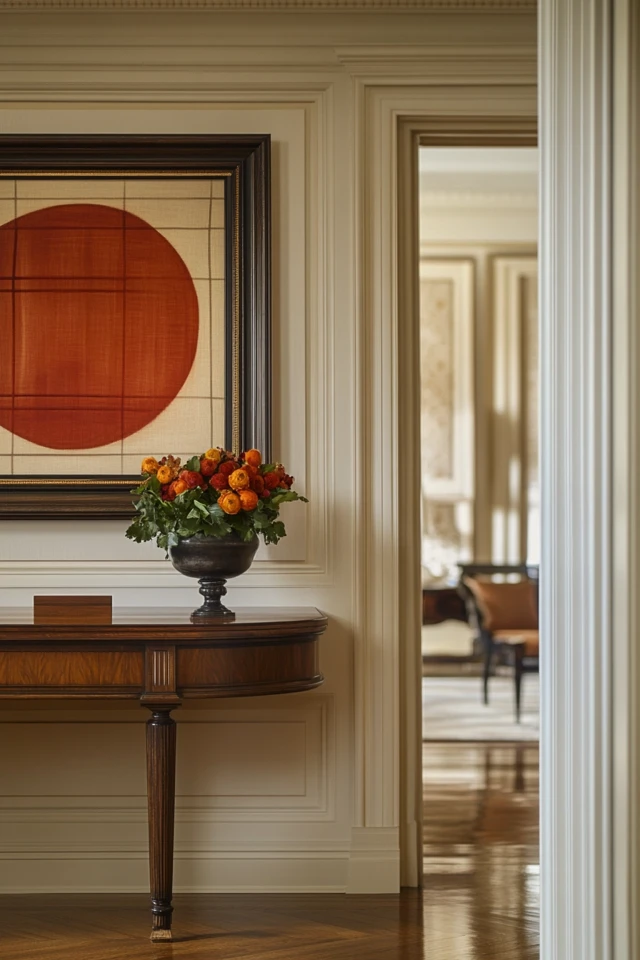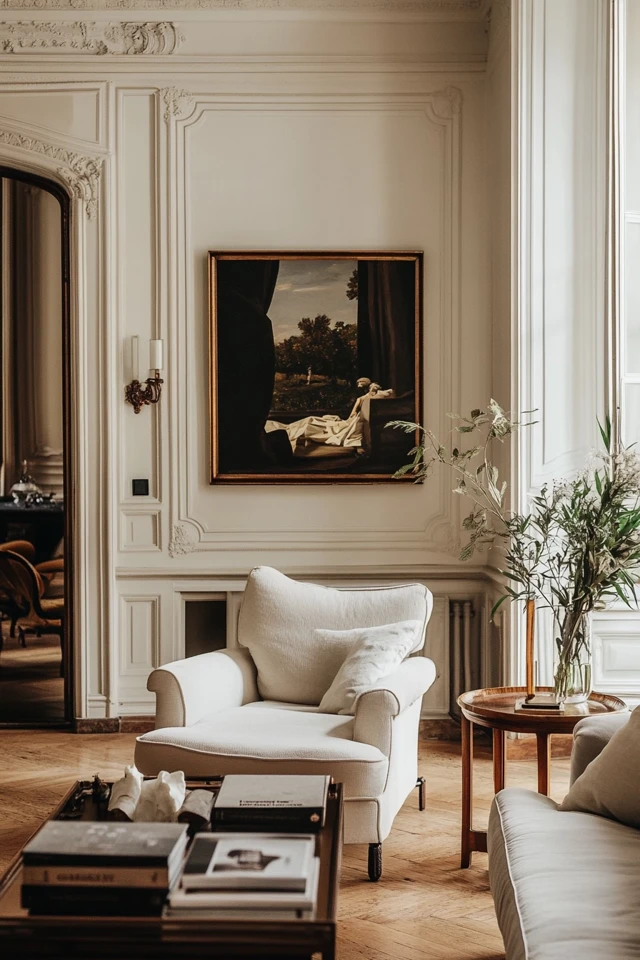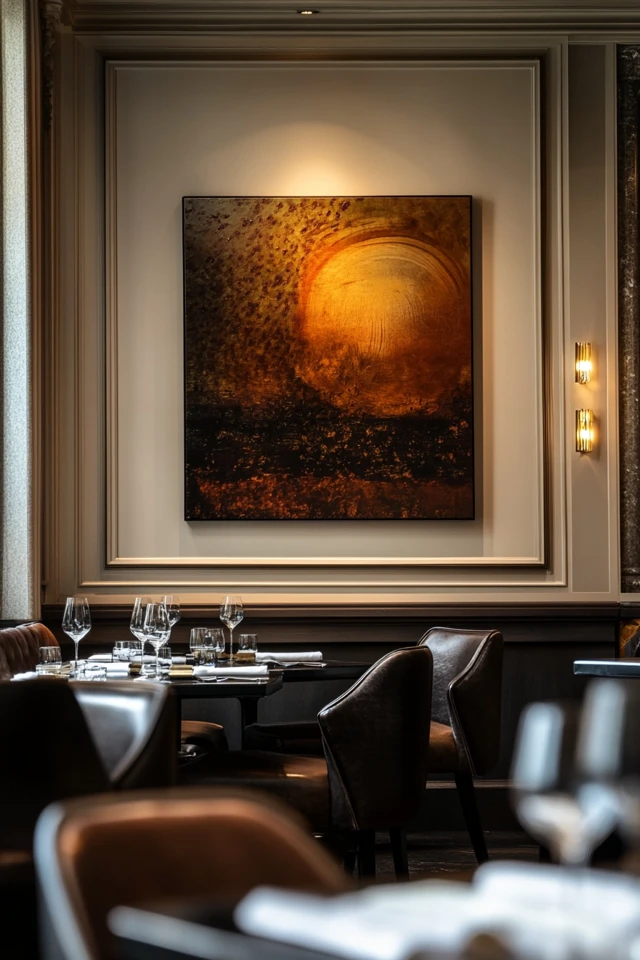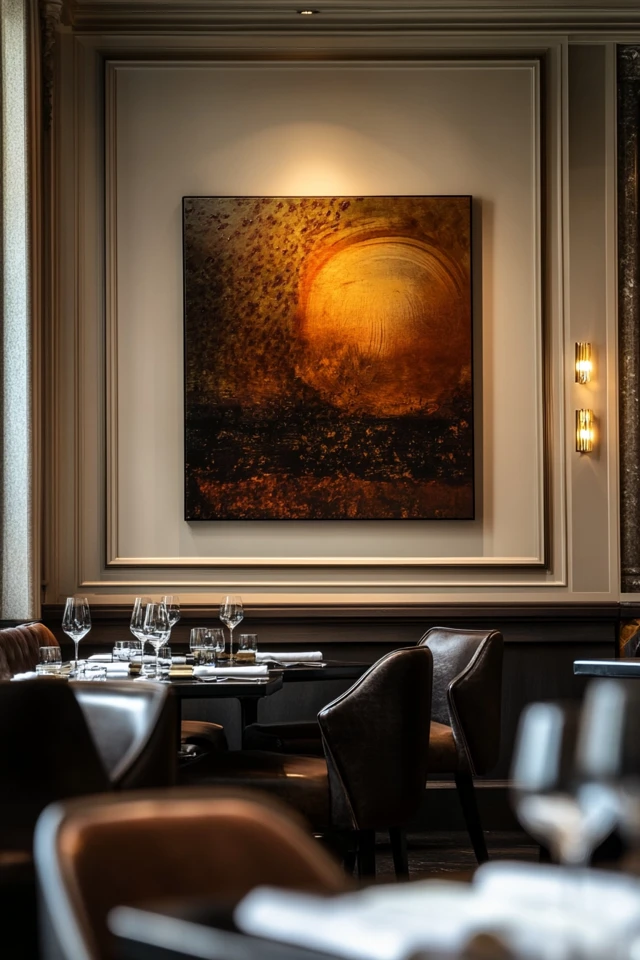Introduction
Oversized art has a magical ability to transform a room, turning walls into galleries and ordinary spaces into stunning focal points. It’s bold, eye-catching, and effortlessly sophisticated. I vividly remember the first time I introduced a massive abstract painting into my living room. The piece dominated the wall, and it was all I needed to bring the room to life. Suddenly, the entire space felt more cohesive, more elevated, and—most importantly—more “me.”
Using oversized art is one of the easiest ways to add drama and personality to a space. Whether you’re showcasing a single piece or creating a gallery-like vibe, large-scale art commands attention and sets the tone for your entire design. In this guide, I’ll show you how to make oversized art work in your space without overwhelming it, helping you achieve that bold statement look with ease.
Why Oversized Art Works in Interior Design
Key Benefits
- Creates a Focal Point: Large-scale art draws the eye and becomes the centerpiece of the room.
- Adds Personality: It reflects your taste and can tell a story about your style.
- Fills Empty Walls: Oversized pieces cover large areas without the need for multiple smaller items.
- Elevates the Space: Bold art creates a high-impact, gallery-inspired aesthetic.
1. Choose the Right Wall
Why It Works
The placement of oversized art is just as important as the piece itself. The right wall makes the artwork shine.
How to Do It
- Select a large, uninterrupted wall, such as above a sofa, bed, or dining table.
- Avoid walls cluttered with furniture or decor—let the art take center stage.
- In open-concept spaces, use oversized art to define zones, like the living area or dining nook.
- Use vertical pieces to fill tall walls or horizontal art for wide spaces.
2. Scale Matters
Why It Works
The size of the artwork should be proportional to the room and the furniture around it.
How to Do It
- The art should cover about two-thirds to three-fourths the width of the furniture it hangs above.
- For taller ceilings, opt for longer pieces to fill the vertical space.
- Use oversized art in spacious rooms to avoid it feeling cramped or overwhelming.
- In smaller spaces, a single large piece can make the room feel expansive.
3. Let It Be the Star
Why It Works
Oversized art should be the main attraction, with the rest of the decor playing a supporting role.
How to Do It
- Keep surrounding decor minimal to avoid competing with the artwork.
- Use a neutral color palette in the room to let the art’s colors and patterns stand out.
- Avoid placing other bold decor elements directly next to the piece—give it breathing room.
- Coordinate furniture and accessories to complement the art’s tone and style.
4. Play With Color
Why It Works
Oversized art has a significant impact on a room’s color palette, so choose colors that resonate with your overall design.
How to Do It
- Use the art as a jumping-off point for the room’s color scheme.
- Incorporate accent colors from the piece into pillows, rugs, or decor.
- Choose black-and-white or monochromatic pieces for a modern, minimalist look.
- Opt for vibrant, colorful art to energize the space and make it feel dynamic.
5. Frame It Thoughtfully—or Don’t
Why It Works
The way you frame oversized art can either enhance its impact or keep the focus purely on the piece.
How to Do It
- For a polished, classic look, use a thin, minimal frame in black, white, or metallic.
- Go frameless with canvas prints for a modern, gallery-inspired vibe.
- Use a floating frame to add subtle definition without overwhelming the piece.
- Skip the frame entirely for raw, unstructured art, like textiles or tapestries.
6. Incorporate Layers
Why It Works
Layering adds depth and interest, making your oversized art feel like an intentional part of the space.
How to Do It
- Lean the piece against the wall rather than hanging it for a casual, eclectic feel.
- Layer smaller decor elements, like lamps or plants, in front of the art to soften its dominance.
- Pair oversized art with complementary pieces, like a bench or console table, for balance.
- If the art is part of a gallery wall, let it act as the anchor, with smaller pieces arranged around it.
7. Think Beyond Paintings
Why It Works
Oversized art doesn’t have to be limited to traditional paintings or prints—it can include anything that adds bold visual interest.
How to Do It
- Use photography for a modern and dramatic effect.
- Incorporate sculptural wall art or large tapestries for a textured, dimensional look.
- Hang oversized mirrors to reflect light and make the room feel bigger.
- Use a bold mural or wallpaper to create an art-like effect across the entire wall.
8. Mix Styles for Contrast
Why It Works
Contrasting styles add intrigue and make the oversized art stand out even more.
How to Do It
- Pair contemporary art with traditional furniture for a striking juxtaposition.
- Combine abstract art with natural, organic decor elements like wood or stone.
- Use oversized art in minimalist spaces to create a bold focal point without adding clutter.
- In eclectic spaces, mix oversized art with smaller, vintage pieces for a layered look.
9. Consider Lighting
Why It Works
Proper lighting enhances the art’s impact, ensuring it stands out both day and night.
How to Do It
- Use picture lights or wall-mounted sconces to spotlight the piece.
- Position track lighting above the artwork for an even glow.
- Let natural light illuminate the art during the day but avoid direct sunlight to prevent fading.
- Use dimmable lights to control the ambiance and highlight the piece appropriately.
10. Rotate and Refresh
Why It Works
Swapping out oversized art keeps your space feeling fresh and lets you experiment with different styles.
How to Do It
- Switch pieces seasonally to match the mood or aesthetic of the time of year.
- Rotate the artwork with pieces from other rooms to give your space a new look.
- Invest in a few oversized pieces that you can rotate over time for variety.
- Change the framing or placement to breathe new life into an old favorite.
Picture Gallery



Conclusion
Oversized art has the power to make a bold statement, adding character and drama to any room. By choosing the right piece, placement, and supporting elements, you can create a space that feels sophisticated, personal, and undeniably striking.
What I love most about oversized art is how it transforms a room with minimal effort. Whether it’s an abstract painting, a vintage photograph, or a massive tapestry, the right piece can completely redefine your space.
So don’t be afraid to go big. Find that one piece that speaks to you and let it take center stage, creating a home that feels like your very own art gallery.
FAQ
What size qualifies as oversized art?
Typically, any piece larger than 36 inches in width or height is considered oversized. The exact size depends on the scale of your space.
Can I use oversized art in a small room?
Yes! A single oversized piece can make a small room feel more spacious and visually impactful. Just keep the rest of the decor minimal.
How do I hang oversized art securely?
Use heavy-duty wall anchors or brackets designed for large, heavy pieces. Always follow the manufacturer’s instructions for mounting.
Can oversized art work in a gallery wall?
Absolutely! Use it as the anchor piece and arrange smaller art pieces around it for balance.
Where can I find affordable oversized art?
Look for budget-friendly options at IKEA, Minted, Society6, local art fairs, or even DIY your own with a large canvas and paint.


